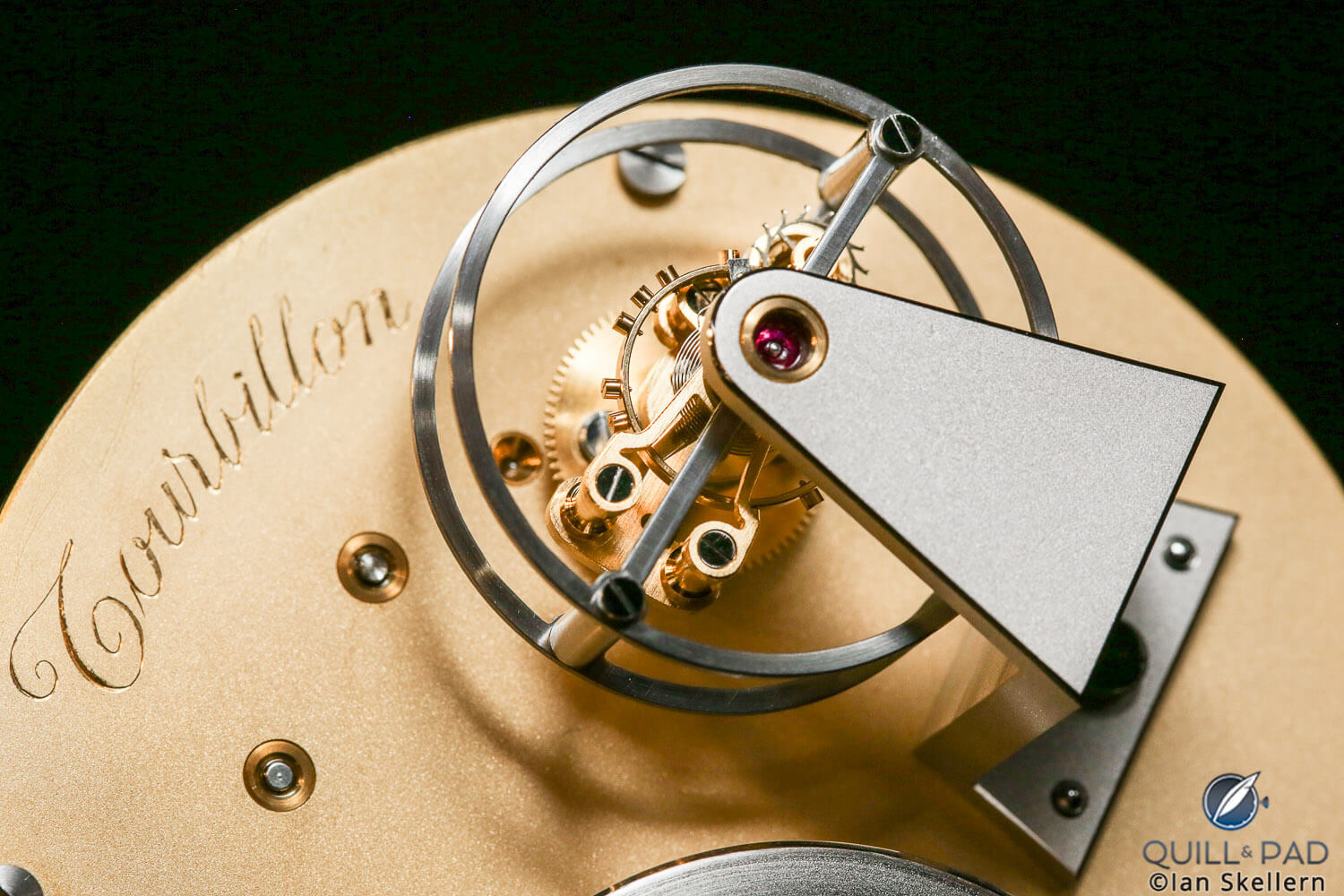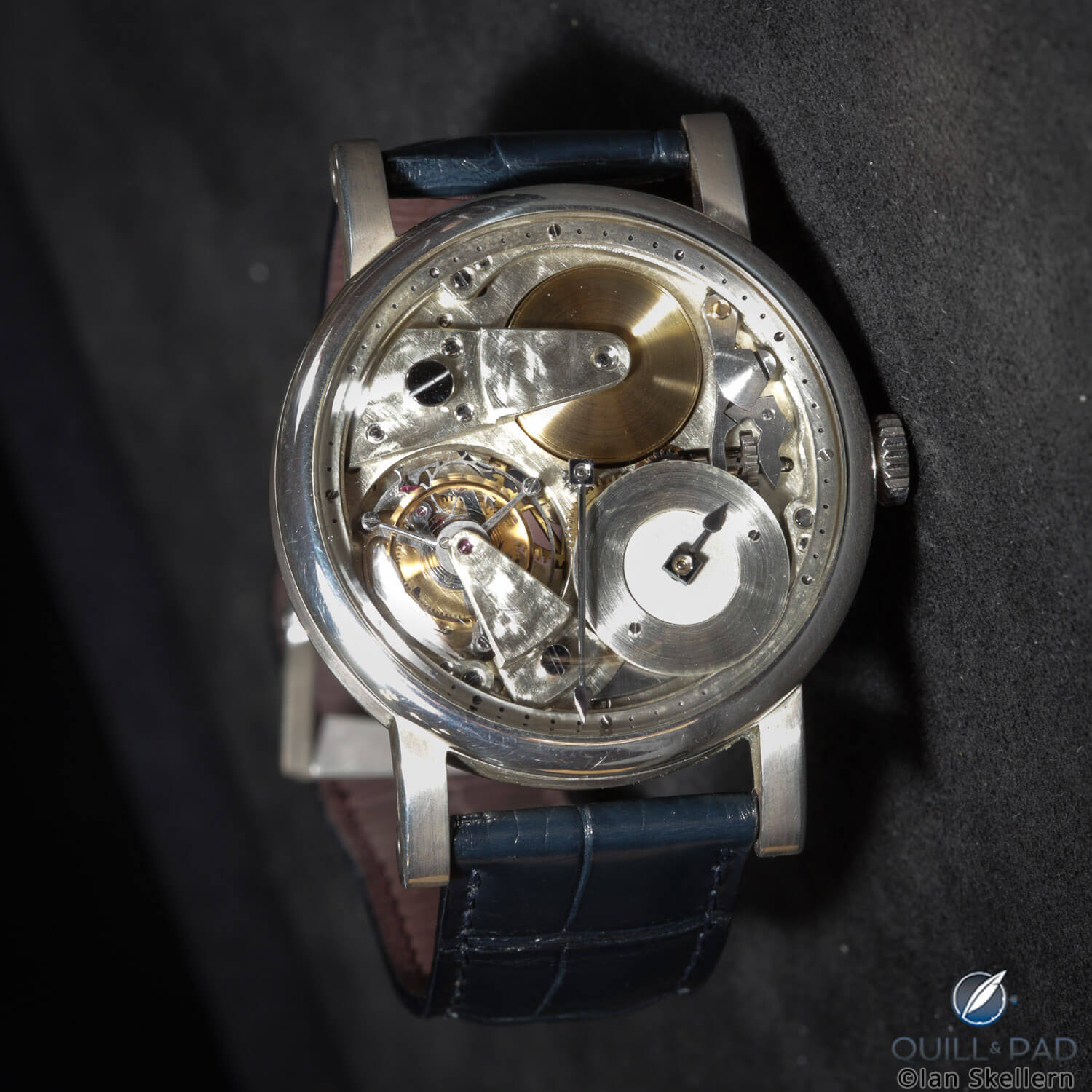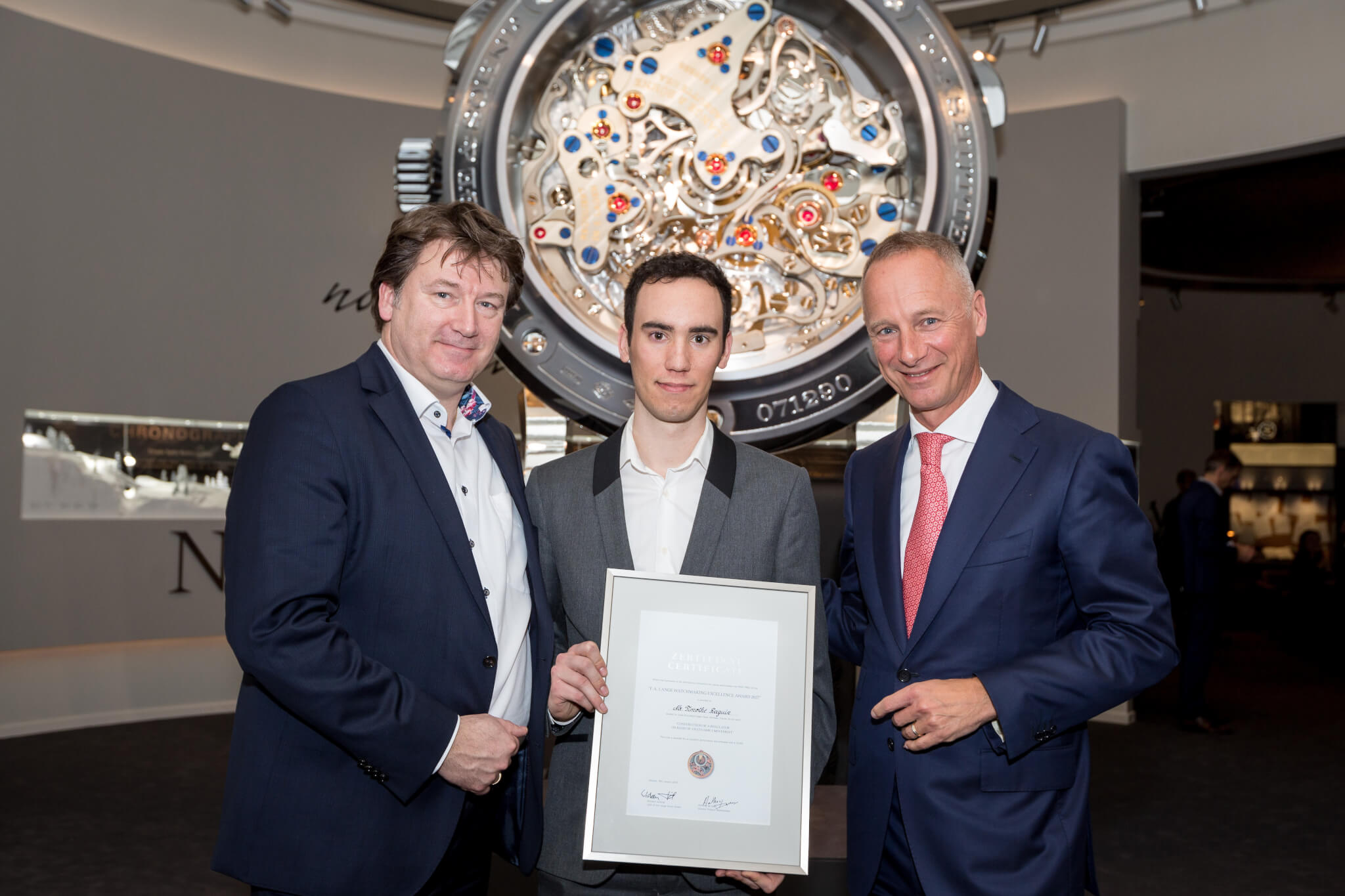How can you motivate the next generation to achieve? This question has been posed by parents, educators, and business leaders alike. The answers always vary, usually based on what has worked for them.
There are many ways to teach and as many ways to motivate someone to try their hardest and strive for excellence. But one tried-and-true example is making the act of achieving a competition among peers.
And for many watchmakers, it fits right up their alleys.
The dispositions of watchmakers vary, but there are those with great ideas just waiting to be given the mental space to grow. For young watchmakers coming up through school or ready to strut their stuff, there are some great outlets for creative energy in the form of competitions.
At SIHH 2018, we saw two such competitions looking to highlight young creative watchmakers: one held by F.P. Journe in collaboration with the FHH and one from A. Lange & Söhne. Each has a specific focus, but both are aimed at giving young watchmakers an opportunity to find the spotlight for their talents.
Judging by the finalists, there is plenty of creativity to keep mechanical watchmaking alive for the next generation.
F.P. Journe-FHH Young Talent Competition
The Young Talent Competition has been going since 2015 so this year was the third iteration, and the finalists did not disappoint. The competition was open to 47 international watchmaking schools in 14 different countries and focused on those who have completed (or are in) apprenticeships as part of the rules for entry.
Aside from either being an apprentice or having completed an apprenticeship, the rules provide for no other limitations on what could be (or may have already been) created and with no work period designated. This differs from the A. Lange & Söhne competition, which I will get to in a little bit.
The Young Talent Competition was judged by eight jurors from the world of horology, including our very own editor-in-chief Elizabeth Doerr and watchmaking legends like Philippe Dufour, Giulio Papi (of Renaud & Papi), Andreas Strehler, Marc Jenni, and, of course, François-Paul Journe himself.
With a jury like that it is clear this would be no cakewalk for any of the entrants. The entries were judged for technical achievement, design understanding, and the level of complexity for the final construction. Based on this, the three finalists took very different paths.
F.P. Journe-FHH Young Talent Competition finalists
Rémy Cools (seriously awesome name), a 20-year-old entrant, built a small clock called the Mechanica Tempus Pendulette Tourbillon that features, you guessed it, a large tourbillon expanded on components borrowed from a L’Epée clock.

Mechanica Tempus Pendulette Tourbillon by Rémy Cools
The overall construction was marvelous, with finishing that even caught the eye of folks at Greubel Forsey (yeah, it was that good). The design was simple yet very refined and had the feel of something that would have been created in the 1930s or ’40s.

Mechanica Tempus Pendulette Tourbillon by Rémy Cools, at bottom right is a smaller mainplate and bridge in the same style as the clock
Probably the coolest feature of the entry was its ability to rotate the entire movement on a horizontal swivel, allowing a view of the inner workings from any angle. The Mechanica Tempus Pendulette Tourbillon was a very deserving winner of one of the prizes.

A close look at the impeccably hand-finished tourbillon escapement of the Mechanica Tempus Pendulette Tourbillon by Rémy Cools
Another finalist, Théo Auffret, went in an entirely different direction to create a handmade, hand-designed tourbillon movement he dubbed the Tourbillon à Paris.

Tourbillon à Paris by Théo Auffret
Aside from a few components borrowed from other calibers, a majority of the gear train and all of the plates and bridges were handmade. And while that is very impressive, he ups it by handmaking the case from silver, spending around a month on just that. He even requisitioned custom mineral crystals to be shaped specifically for this case.

Tourbillon à Paris by Théo Auffret
The overall style and finishing of the piece are reminiscent of very early school watches, and it has a rugged, firmly handmade look. Flat polished screws meet with hand-filed bridges right next to blued-steel hands. Taking roughly two years to make, it shows a dedication to traditional watchmaking (and case making) techniques that was very appropriately awarded.
And in case you noticed any similarities in movement architecture with the Le Garde Temps Time Aeon project, it makes sense: Auffret spent the 2017 SIHH in the Time Aeon Foundation booth getting lessons with Michel Boulanger (see A Hero’s Journey Begins And Ends: Naissance d’Une Montre, Le Garde Temps).

Winners of the 2018 F.P. Journe-FHH Young Talent Competition: (L-R) Rémy Cools, François-Paul Journe, Eric Zuccatti (sponsor Horotec), Théo Auffret, and Charles Routhier
The third finalist was Charles Routhier, who designed and built a watch named Halley after the comet that appears in the sky once every 76 years. One look at the watch and the reason for the name becomes obvious: the movement was developed to display the balance on the dial, with the bridge shaped like the tail of a comet.

Halley by Charles Routhier
Trailing the tail is a star field of polished steel domes, and hidden among the star field is the constellation Orion. The balance oscillates at 12 o’clock, chasing a set of polished domes marking the hours until 7 o’clock when it turns into the star field.
The dial is a deep blue, creating a vision of the night sky. Turning the watch over reveals an interesting form for the handmade plates and bridges, with execution and finishing making it look nearly like a production watch.

Beautifully finished movement visible through the display back of Charles Routhier’s Halley
The extra details are what make this watch so awesome, including the hollowed lugs on the case and the onyx cabochon in the crown. It feels fully considered, and so it was justifiably recognized.
F.A. Lange Watchmaking Excellence Award
The competition set forth by A. Lange & Söhne is a whole other beast. It still looks for creativity, complexity, and design understanding, but the process is oh so different.
It begins with the selection of eight participants from a list of applicants, who all come to A. Lange & Söhne headquarters for a week of intensive instruction in techniques and theory. At the end of this (what I would call) dream week, the participants return to their respective schools with a directive to create something in six months to be submitted for judging.
This year the challenge was to create a regulator watch to display hours, minutes, and seconds on separate dials (or in some other unique, separated way). The participants had to design and build the watch from scratch in six months, which is no small feat even for accomplished watchmakers.
While everyone will have their own idea of where to go with the directive; some go for simplicity, others for extravagance. All the while trying to add a little bit (or a lot) of uniqueness to make it stand out. The winner this year created an incredible piece, but there were so many good entries that two other runner-up prizes were awarded.
And, boy, were they all awesome.
F.A. Lange Watchmaking Excellence Award finalists
In third place was Vesa Kulkki from the Finnish School of Watchmaking in Espoo, Finland (the alma mater of Stepan Sarpaneva) with his Formula One-inspired design. The dial is “driven” (see what I did there?) by the large bridge spanning the movement in the shape of a vintage steering wheel.

F.A. Lange Watchmaking Excellence Award finalist Vesa Kulkki’s Formula One-inspired design
The bridge holds five jewels for wheels, second hand, and the hour and minute disks. The centrally located second hand is a simple, long, black stick pointing to a chapter ring, which is also the outer edge of the steering wheel bridge.
The hour and minute disks are offset from center where typical dash gauges would be placed. Both disks rotate, and an indicator hand shaped like speedometer and tachometer needles provide reference for reading the time.
The finishing of the components makes the dial feel like a vintage car’s dash, and the layout is easy to read. The design shows a clear understanding of proportion and solid mechanical layout.
It is a great idea, and with a few tweaks I could easily see this in an independent brand’s lineup.
In second place is an extremely cool satellite system from Veit Rothaupt, who studies at the vocational training center in Glashütte, Germany. The layout is extremely simple, but the execution is not. Two subdials for hours and minutes rotate around the dial every 12 hours with a center pointer that indicates day and night (though just how is unclear from photos). The central seconds extend to the edge of the dial with a minimalist chapter ring that covers the satellite ring gear.

Watch by F.A. Lange Watchmaking Excellence Award finalist Veit Rothaupt from Glashütte, Germany
Underneath the center seconds and above the lower pointer is a highly skeletonized wheel that drives the satellite system, slowly moving the regulator around the dial. Beneath the entire system is a blasted translucent dial just hinting at the mechanics underneath. The execution is a bit more polished than the third-place piece and shows more mechanical development as well.
And while I would love to have this one on my wrist as well, the F.A. Lange Watchmaking Excellence Award winner takes his game up a few notches.

Timothé Raguin (center) with his F.A. Lange Watchmaking Excellence Award received by A. Lange & Söhne product director Tony de Haas (left) and CEO Wilhelm Schmid
The winner, Timothé Raguin, hails from Lycée Polyvalent Edgar Faure in Morteau, and based on his creation the deck was kind of stacked in his favor.
His creation is darn awesome and coincidentally has the same mechanism that Walter Lange so loved, the independent jumping seconds. This alone may not have won him the prize, but combined with the design and mechanical creativity it sealed his spot as the best of the competition.

F.A. Lange Watchmaking Excellence Award winner Timothé Raguin presented this watch with independent jumping seconds
The design is highly traditional and the features the best finishing of the bunch. The hours, minutes, and 24-hour display circle the center of the dial in a series of small subdials beginning at 5:30 and circling to 9 o’clock. The entire traditional regulator time display only takes up 30 percent of the dial; the rest is overwhelmed by the very cool jumping seconds mechanism and subdial.
The escapement wheel, anchor, and activating tri-lobe cam run from the center of the dial out to 3 o’clock where an opening in the main plate provides a glimpse into the heart of the movement.
The style of the components are traditional yet clean, and hand-engraved subdial rings lend it an air of being very old and at the same time very contemporary.
The escapement tri-lobe cam cock is probably the most impressive with a barrel-shaped arm that is beautifully polished along its length, reminiscent of the best brands around. This piece clearly shows the most deliberate design thinking for mechanism layout, and aside from some spacing issues between the subdial chapter rings, it is rather spectacular.
And given that it was completed by a student in just six months’ time, the prize of €10,000 is well deserved.
Motivating the next generation of watchmakers
It is competitions like these that help give young watchmakers a way to stretch their horological legs and create something that catches the eyes of industry leaders. People who have won competitions like these before have gone on to work for big names in the industry and will surely become important players in the future of haute horlogerie.
These competitions are also important to show that some brands understand the need for outlets for young ambition and creativity. Since these brands stand behind the watchmakers they choose by helping them get to the next stage in their careers, they are almost directly passing the torch to the next generation.
The F.A. Lange Watchmaking Excellence Award – which has now been renamed the Walter Lange Watchmaking Excellence Award – has been a way to promote, well, excellence in watchmaking and was always a way to give back to the next generation, very much in tune with Walter Lange’s own way of thinking.
The more recent creation of the Young Talent Competition from F.P. Journe increases the opportunities for those in training and fresh out of school to make their marks on the industry and gain a leg up.
These two competitions alone give an audience to young watchmakers that allows them to shine in an industry that usually focuses more on PR and marketing than honoring the people behind the watches.
I think these competitions are vital to the survival of the industry, and more should be created to give even more opportunities to cool things up-and-coming watchmakers have in their minds.
More than that, I hope that perhaps some of these designs may even find homes someday in a brand or independent collection, or that the watchmakers behind them can realize them for sale. There really are some great ideas, and they deserve to be realized on a larger scale and with real budgets behind them!
For more information, please visit www.fpjourne.com/en/evenement/events/young-talent-competition-2018-edition and www.alange-soehne.com/en/news-and-more/f-a-lange-watchmaking-excellence-award-2017.





















































Trackbacks & Pingbacks
[…] Source link […]
Leave a Reply
Want to join the discussion?Feel free to contribute!